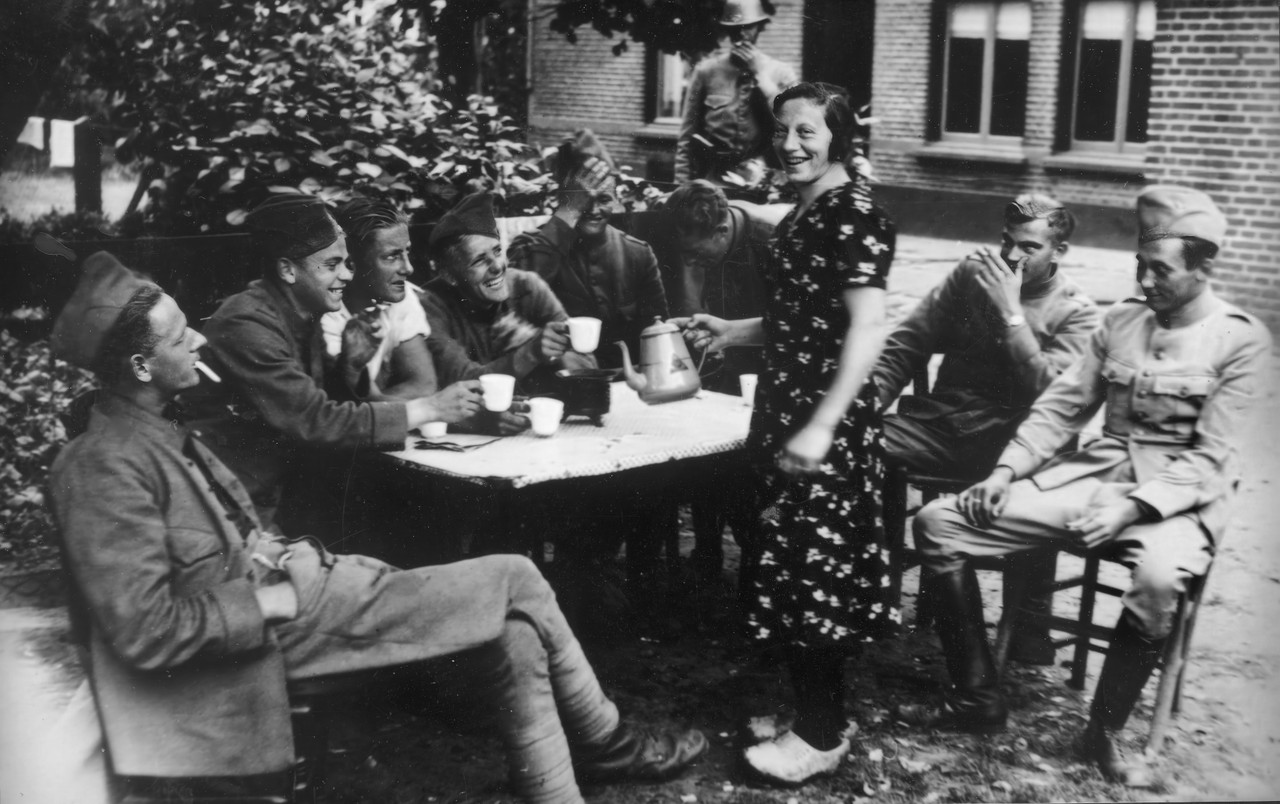In the war diary of the 12th Manitoba Dragoons, it was recorded that this Canadian regiment advanced at high speed through western Twente and a part of Germany toward the Vechtdal, in the northeast of Overijssel. On 5 April 1945, the first Canadian vehicles — mostly Bren Gun Carriers, lightly armored tracked vehicles — entered the Netherlands at the German border village of Laar, hamlet De Haandrik. This was also one of the places where the German army had invaded the Netherlands five years earlier, on 10 May 1940.
Heavy fighting broke out at De Haandrik on that fifth of April 1945. Some farmers, who had been forced to provide shelter to German soldiers, raised a white flag as a sign of surrender. This spared, among others, the Wilpshaar farm. Fierce firefights, however, were unavoidable. German troops put up significant resistance, and as a result the farms of the Hazelaar and Haandrikman families, as well as café Vechtzicht, went up in flames. The reconnaissance troops of the Canadian regiment managed to push through to Gramsbergen with several Bren Gun Carriers. On the Esch, a firefight broke out with German soldiers fleeing back to the Heimat.
Shaken by the resistance, the Canadians then withdrew to De Haandrik. For the residents of Gramsbergen, it meant another long and fearful night.
In the morning of 6 April, the moment finally came. The Manitoba Dragoons were able to enter Gramsbergen unhindered, and liberation was a fact. The population of Gramsbergen gathered at the town hall, where the Wilhelmus, the national anthem, was sung spontaneously and with full voice.
Although Gramsbergen itself suffered relatively little physical damage, the joy of liberation was overshadowed by several tragic events shortly beforehand.
On 4 April, a train marked with Red Cross flags at De Haandrik was attacked by a British Spitfire, presumably under the impression it was a German ambush. Roelof Meilink, a resident of a farm at De Haandrik, was killed. A monument at the site commemorates this impactful event.
To slow the advance of the liberators, the German occupiers placed a dynamite charge at the Vecht Bridge in Ane. Resistance fighter Albert Jan Kappert attempted to remove it but was caught by a German patrol and shot dead on the spot without mercy.
Other local resistance fighters were ordered to neutralize the German listening post in the hamlet of De Meene. They believed the post had been abandoned because the Germans were thought to have fled. What they did not know was that German soldiers, driven out of De Haandrik by Canadian fire, had taken refuge there.
As a result of the firefight that followed, resistance fighters Albert Groenewoud, Jan Hulter, and Sam Mellema were killed. In memory of these fallen resistance members, a war monument was later erected beside the town hall at De Esch in the center of Gramsbergen, as well as at the municipal cemetery on De Anerdijk.
